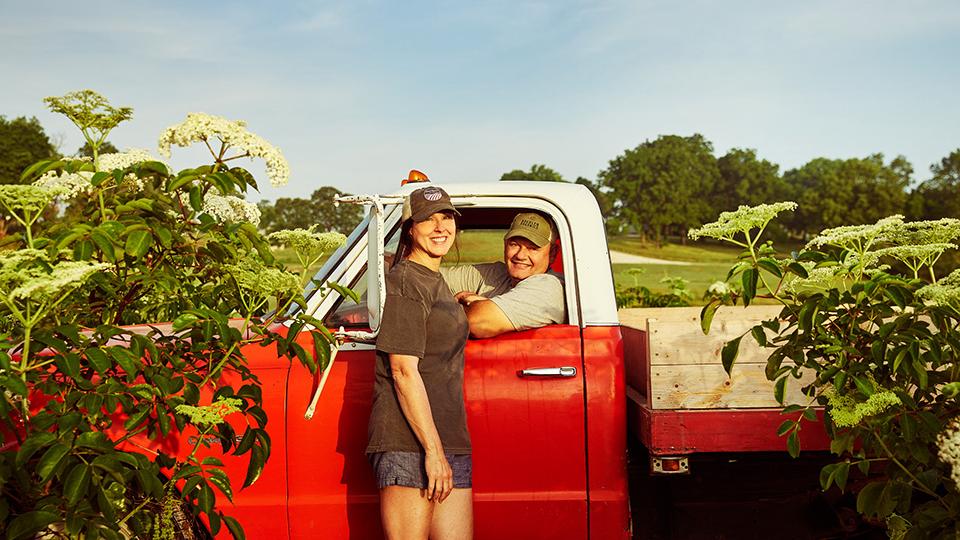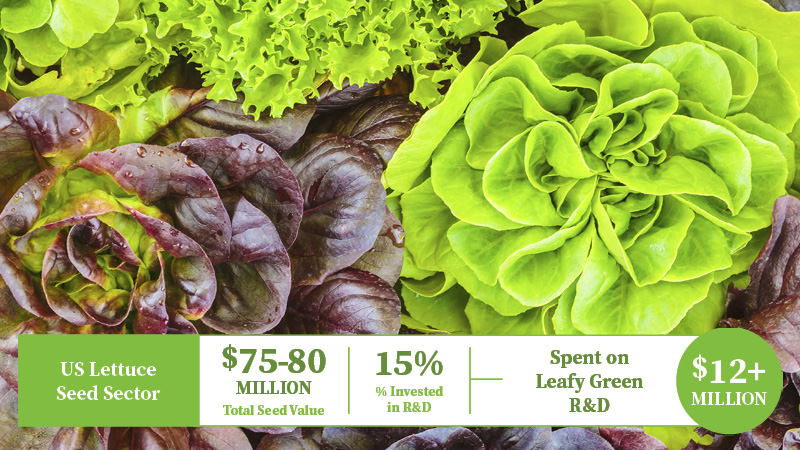Cheers To Growing Elderberry — American Style

Founding partners David and Ann Buehler focus on the growing and marketing of elderberry plants at their Elder Farms operation in Mount Vernon, MO.
Photo courtesy of Starboard and Port Creative
David Buehler figures if he can turn elderberries into a viable alternative crop, then any grower can (and should) with his help. He is, after all, a fourth-generation farmer from the Show-Me State.
“We’re an open book here,” Buehler says of his elderberry operation, Elder Farms, in Mount Vernon, MO. “We help other farmers if they want to come here and tour our place. We travel around the country. We do custom planting. We do consulting. I’m willing to share with other people because I believe in this plant.”
The U.S. currently imports 95% of its elderberries from Europe, where approximately 30,000 acres are dedicated to the crop. Buehler wants to diminish that reliance by increasing domestic acreage from the current total of 1,800 — around 500 in Missouri — to the estimated demand need of 22,000.
“How often do people get to be at the very beginning of an industry? That’s where we’re at with this,” Buehler says. “My goal is to have a lot more acres in the ground. We need more people to grow this. Let’s build up an American inventory and American acreage. We’re all kind of learning and pioneering this together, and that’s what really makes it fun.”
Change of Pace
Since 1899, four generations of Buehlers have been farming corn, soybeans, and cattle on their homestead along the Spring River. Between 2011 and 2012, David Buehler and his wife Ann started replacing some of the soybean acres with elderberry bushes, 10 acres at a time over multiple seasons. Today 65 of the farm’s 420 total acres are dedicated to the novel crop, which is normally processed either alone or with other fruit rather than eaten fresh due to its tartness and reported toxic effects.
“People would say, ‘What are you growing?’ They just thought I was nuts because I was taking good cropland and putting it in the bushes,” Buehler says. “My dad, he cussed me up one side and down the other. I said, ‘I know it sounds crazy, but someday I think this is going to be something.’ And we’ve spent a lot of years learning what works and what doesn’t work.”
In turn, farming has become enjoyable once again for the family and its staff. Elderberry is a sustainable- and regenerative-type crop, which are the “big buzzwords” in growing these days, Buehler says. The farm is USDA Certified Organic, and no chemicals are used.
“I’ve always been interested in farming, but the fun in farming — traditional farming — kind of left me. I just see a lot of issues with it,” Buehler says. “It’s one of the easier plants to grow, and I’ve grown a lot of plants. Once this plant is established, you’re looking at production for the next 25 to 30 years. I feel like this is kind of my calling.”
Field Work
While Missouri has become the unofficial hub of U.S. elderberry growing — University of Missouri Professor Andrew Thomas has been conducting elderberry research for more than two decades at the school’s facility in Mount Vernon — the plant can be grown anywhere between Florida and Canada, Buehler says.
“These SOBs are tough. They’ll take about anything,” Buehler says. “The heat definitely cut production last year, but we had probably two months of 100-degree temperatures. The northern boys had more of an average year and had good yields, but for everybody in Texas, Arkansas, Oklahoma, and Missouri, we were just struggling. But that was a weather year that I’ve never seen, and I’m 55 years old.”
Elderberry plants prefer about an inch of water per week, typically via drip irrigation, Buehler says. They require no trellising. Weed and grass control during the early years of the plant and harvesting are the top production issues, he says.
“We don’t have any kind of mechanical harvesting yet. I think we’ll see something, maybe, in two or three years,” Buehler says. “But the hand picking is really not that bad.”
Initiating a plant breeding program and, until then, sorting through native U.S. varieties is essential, according to Buehler. “As we go forward with this plant, we’re definitely coming across better varieties,” he says. “I’ve got a variety here out of Arkansas called ‘Pocahontas’, and I’ve got one out of Iowa; both of them just blow you away how fast they grow and what kind of production we get off of them.”
The University of Missouri says elderberry growers can achieve yields from 5,000 to 8,000 pounds per acre. More conservative, Buehler says a good average is between 3,000 and 5,000.
“There’s a guy in Arkansas, he’s hit 10,000 pounds of berries per acre, but he’s a super organic grower and does really well on his management,” Buehler says. “We’re so far stretched here between developing products and helping other farmers get started, a lot of times my fields are the last to get any attention. But the profitability
is there.”
Wellness Factor
The marketability of the crop revolves around its health benefits. Elderberries — all parts of the plant — have been used for centuries as a natural remedy. Since COVID, Buehler says, the plant has “just exploded.”
“This is a berry that is almost better after it’s processed a little bit,” Buehler says. “You’re not going to go down to the field and eat a few. It’s going to be tart. We’re looking at it more as an ingredient.
“I was just basically going to grow the berry and sell it to processors. But then we decided to make our own product line. I started digging deep into all the different things we could make out of this plant. We literally use every part of it for something. The flowers go for ingredients. We do skin care products with leaves and flowers. We press the berry. We use the pulp. The opportunities here are just amazing.”










